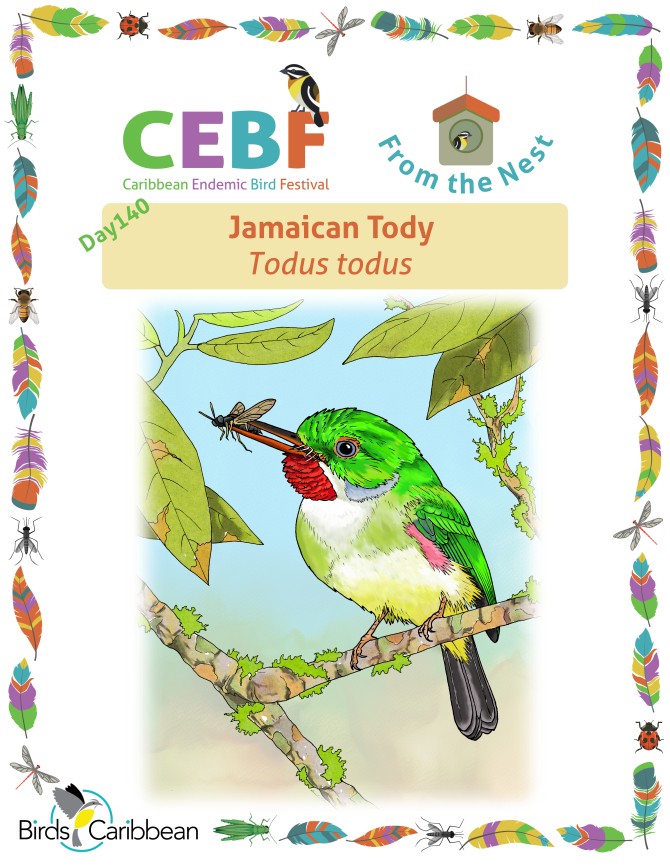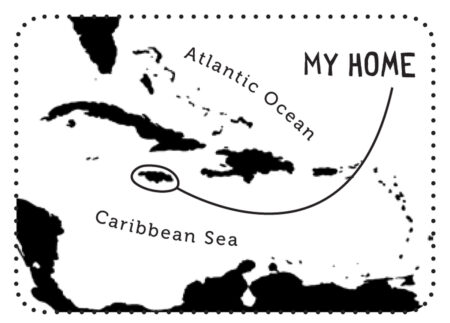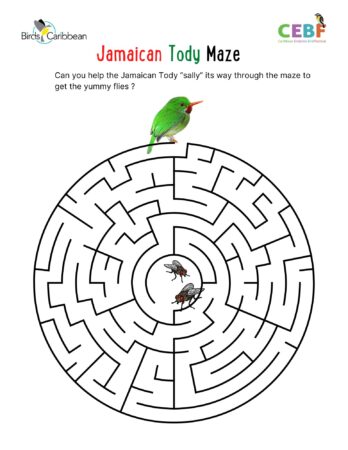Celebrate the Caribbean Endemic Bird Festival (CEBF) with us! Our theme in 2024 is “Protect Insects, Protect Birds”—highlighting the importance of protecting insects for birds and our environment. Have fun learning about a new endemic bird every day. We have colouring pages, puzzles, activities, and more. Download for free and enjoy learning about and celebrating nature!
Endemic Bird of the Day: Jamaican Tody
When you hear the name Robin Redbreast, you might think of different birds from around the world. But in Jamaica, it refers to the Jamaican Tody (Todus todus). European settlers, nostalgic for the robins of their homelands, tended to name any small bird with a splash of red on its chest a “robin.” However, the Jamaican Tody doesn’t actually have a red breast—it has a red throat! Its compact body sometimes makes this detail less obvious at a glance.
This tiny bird has other fascinating local names—‘Jesus Bird’ and ‘Rasta Bird.’ According to legend, during Christ’s crucifixion, a drop of blood fell onto the bird as it looked up at the cross, leaving a permanent mark. Its ‘Rasta Bird’ nickname comes from its striking red, green, and yellow colors, which match the Rastafarian flag, making it a true symbol of Jamaica.
Todies are a unique genus found only in the Greater Antilles and are entirely endemic to the Caribbean. There are five species, each found on a single island—except Hispaniola, which has two. The Jamaican Tody was the first tody species to be described by scientists.
This vibrant little bird is only about 9cm (3.5 inches) tall, with a large head, stout body, and short tail. It looks like a puffball of feathers, with a vibrantly red throat, a pointed red-and-brown bill, and a dazzling green back and wings. It has a white mustache that ends in a touch of blue. The iris can be blue-gray, brownish-white, or even a rare half-and-half combination! The breast is white, with some green washing on the sides. There are varying amounts of pink on the flanks and bright yellow or green on the lower belly.
Found in all types of forests, from mangroves to mountains, the Tody is most common at mid-levels. Don’t let its small size fool you—it has a huge personality! You’ll likely see it flitting about in the undergrowth, constantly searching for its next meal. It perches on low branches with its long, broad bill tilted upwards as it patiently scans the vegetation for crawling larvae and flying insects. Once spotted, the Tody swoops down or up to catch its prey in a flash! Captured prey are shaken or beaten against a branch before being eaten.
This tody is also quite vocal! It gives a loud “beep” call during the breeding season and a rapid, guttural “frrrup” sound for territorial displays. If danger is near, it lets out a sharp “cheep.” But not all of its sounds come from its beak—its wings create a signature “buzzing” noise in flight!
When it comes to raising their offspring, a typical nest of leaves and twigs just won’t do for Jamaican Todies. Instead, they dig burrows into soil banks, where they lay 1 to 4 white eggs. Both parents take part in excavation and chick-rearing.
Although not currently threatened, Jamaican Tody populations are impacted by habitat destruction and predation by the invasive Indian Mongoose. Reforestation efforts and controlling invasive species can help ensure this little bird continues to thrive. Learn more about this species, including its range, photos, and calls here.
Great news! If you’re in the Caribbean, thanks to BirdsCaribbean, you have free access to Birds of the World, where you can explore a full species account of this bird!
Thanks to Arnaldo Toledo for the illustration and Damany Calder for the text!
Colour in the Jamaican Tody
Download our West Indies Endemic Bird colouring page. Use the photos below as your guide, or you can look up pictures of the bird online or in a bird field guide if you have one. Share your coloured-in page with us by posting it online and tagging us @BirdsCaribbean #CEBFfromthenest
Listen to the song of the Jamaican Tody
The song of the Jamaican Tody is a series of scratchy sounding “zheh” sounds often followed by a brief rattling call.
Puzzle of the Day
Click on the image below to do the puzzle. You can make the puzzle as easy or as hard as you like – for example, 6, 8, or 12 pieces for young children, all the way up to 1,024 pieces for those that are up for a challenge!
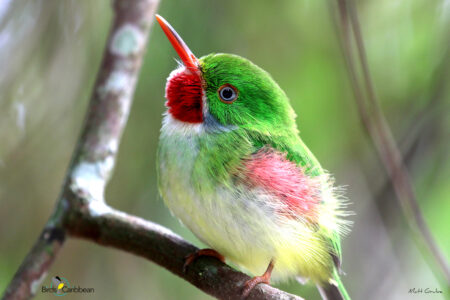
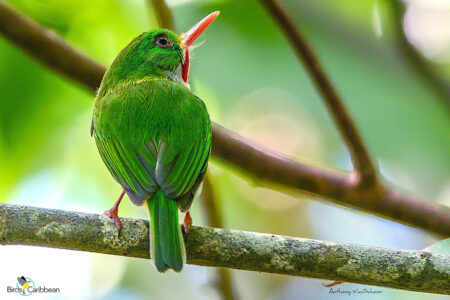
Activity of the Day
FOR KIDS : Jamaican Todies feed on insects like beetles, flies, moths, crickets, and grasshoppers. When catching flying insects for a delicious meal Todies will “sally” (swoop) out form their perch on a nearby branch and grab this insect right out of the air! If they are successful they then head back to their perch and tuck into their catch.
Can you help this hungry Jamaican Tody find its way through our maze to to grab some tasty insect food? You can find the correct route here.
FOR KIDS AND ADULTS : Enjoy this video of a Jamaican Tody in the wild!

